What Happened at Oradour-sur-Glane: The Martyr Village of France
Hey there! This post may contain affiliate links, which means I’ll receive a commission if you purchase through my link, at no extra cost to you. Please see my legal page for more details.
This is what happened at Oradour-sur-Glane, which is the martyr village of France.
The village looks exactly as it did after a massacre on June 10, 1944. It looks just as it did when the fires stopped smoldering, leaving behind only the memories of 642 villagers of the quiet town of Oradour-sur-Glane.
The burned-out shells of buildings stand where people once worshiped at the church, gossiped at the bakery, lunched at the village café, and received rations at the town hall. They are a reminder of what this village was before it became the martyr village of France.
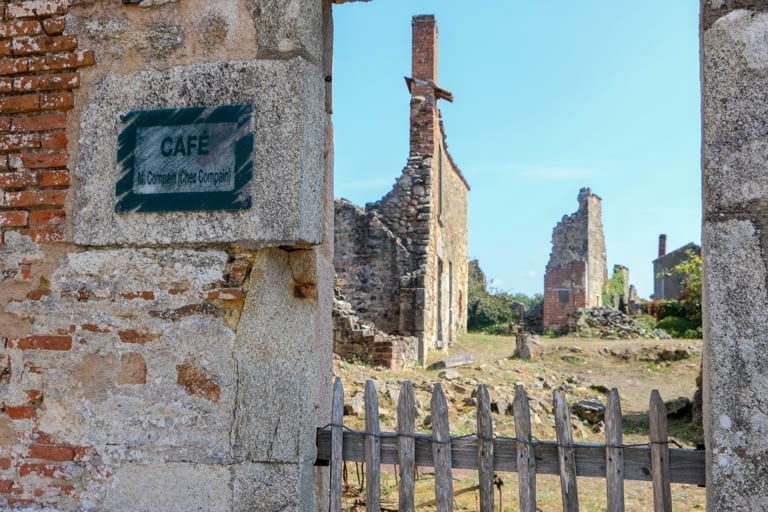
Oradour-sur-Glane is purposefully preserved in a state of total ruin so that we never forget the atrocities of war or of the Nazi Regime. It is a museum to a massacre.
We will never understand why this happened. But we can try to understand what happened at Oradour-sur-Glane.
It was a morning like any other in wartime France
Oradour-sur-Glane was a quiet farming commune with no discernable connection to the French resistance movement.
There were certainly strongholds of resistance nearby, and the resistance was absolutely emboldened by the very recent landing of the Allied Forces at Normandy, but the people of Oradour-sur-Glane seemed, for the most part, to keep their heads down in the midst of the Nazi Occupation.
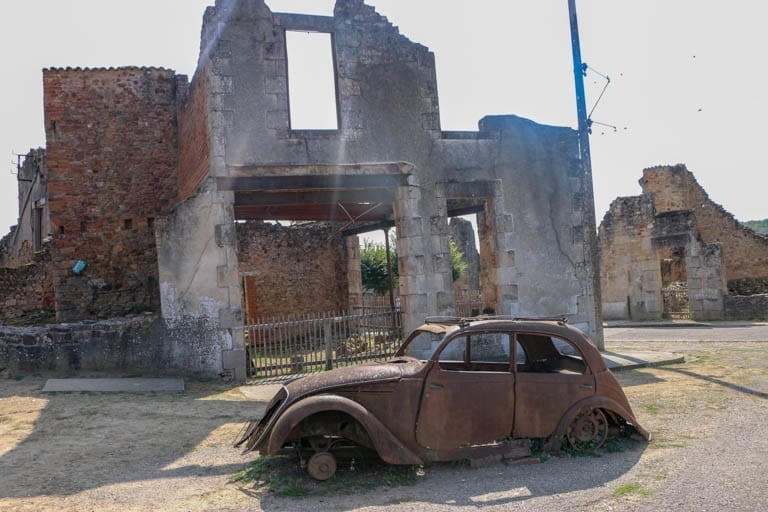
June 10, 1944, was a bit busier in Oradour-sur-Glane because it was tobacco-ration day. Even those villagers who may have stayed out of town were near the square that day because tobacco rations were important for smokers and non-smokers alike. It was an easily traded commodity in a starving country.
What happened at Oradur-sur-Glane to turn this quiet town into the martyr village of France
In the afternoon, the 2nd Panzer Division of the Waffen-SS began searching farmhouses and buildings on the outskirts of the village. They started in a wide circle, systematically closing the size of that circle until they reached the village, bringing with them every person they found along the way.
Once in town and under the guise of an identity check, the Nazis ordered the villagers to gather in the square. This was unsettling, but not unheard of in Nazi-Occupied France. Most of the village population did as they were told.
About 20 people, including four Jewish refugees, chose to hide or run into the woods or across the River Glane. Some who ran would survive the impending massacre.
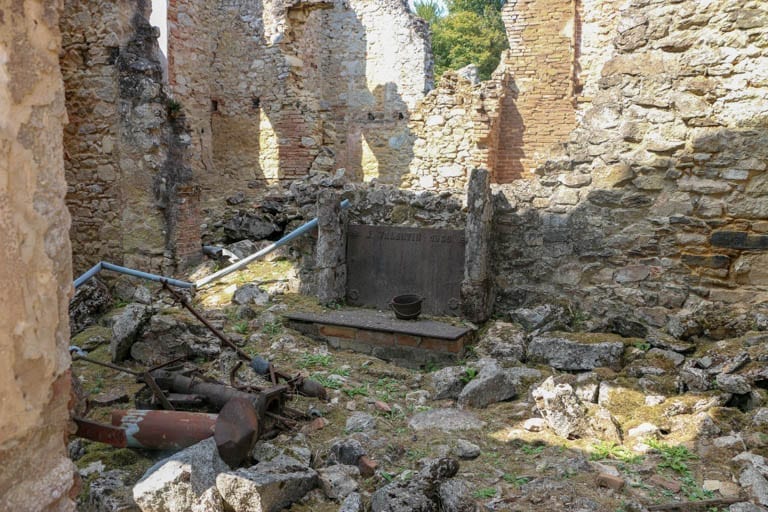
Once assembled in the town square, no identity cards were ever checked.
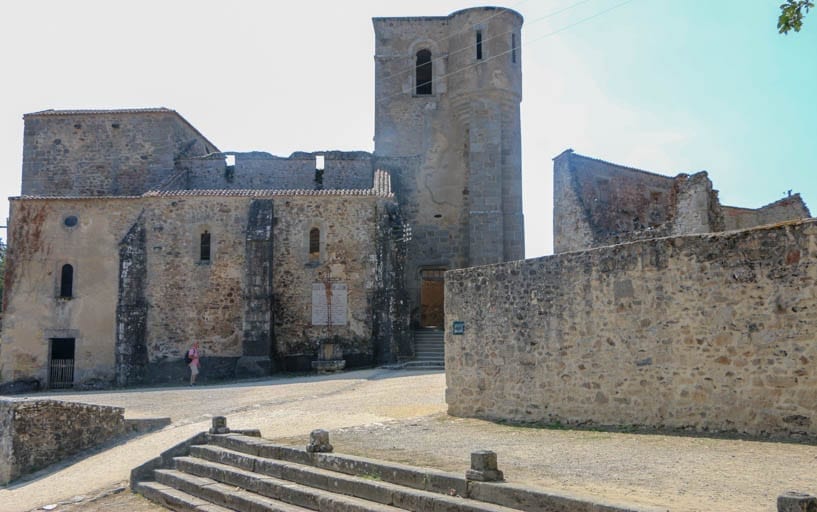
Instead, the women and children were separated from the men and marched to the church. The men were marched in six different groups to six different buildings throughout the village.
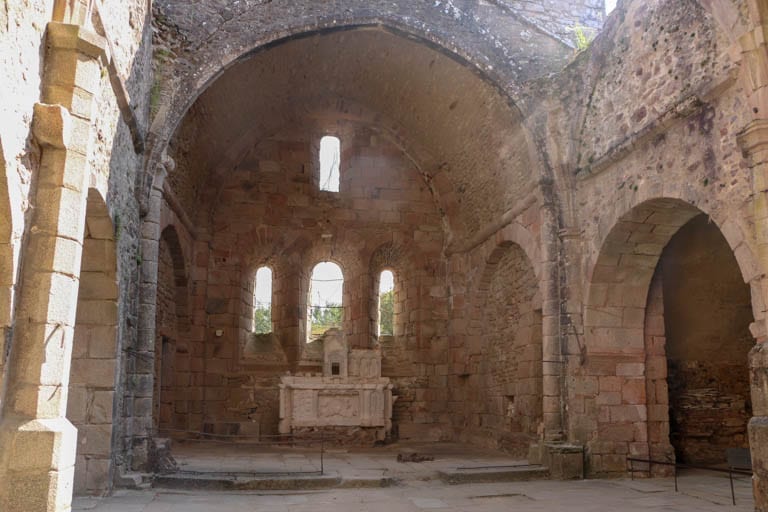
The massacre of Oradour-sur-Glane
The Nazis brought a large box into the church and placed it in the center of the women and children. They left, locked the door, and positioned themselves outside with guns aimed at all exits.
The box soon exploded, filling the church with smoke. When the women and children tried to crawl through windows to escape the suffocating smoke and the scorching flames, they were shot by the waiting soldiers outside.
There was only one survivor from the church. Madame Marguerite Rouffanche climbed out of a window and hid in a bush, ultimately recovering from the gunshot wound she received during her escape.
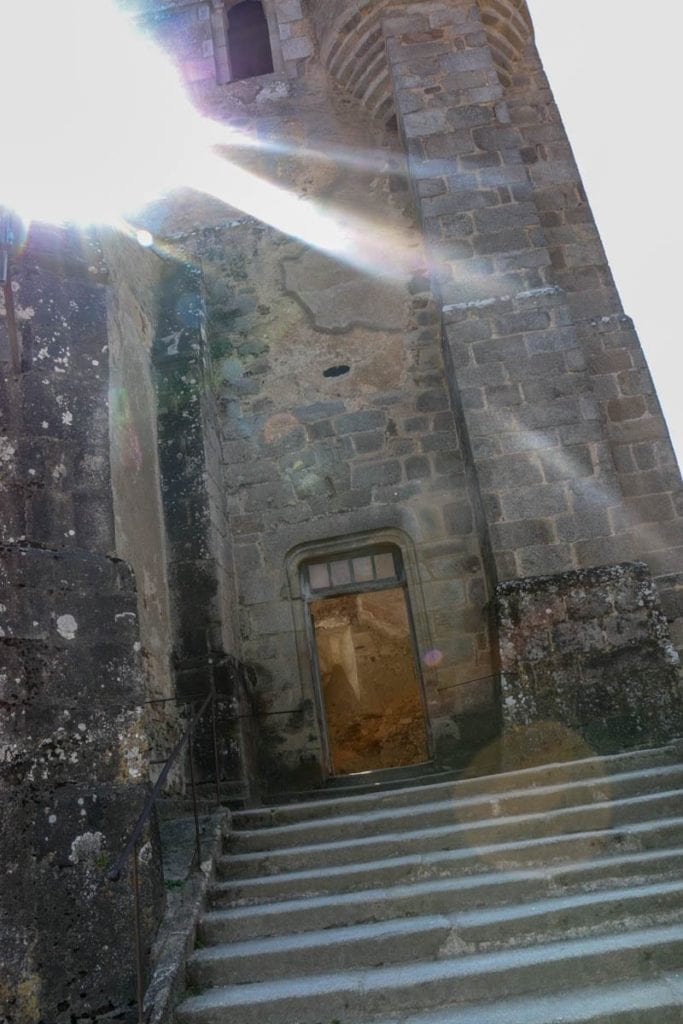
At the same time that the makeshift bomb went off at the church, the six groups of men were gunned down.
The soldiers aimed their gunfire at the legs of their victims and then piled straw and wood on top of the fallen men. They then lit the straw on fire. In an effort to disguise the massacre, the Nazis lit fires throughout the rest of the town.
There were five men who somehow survived the massacre.
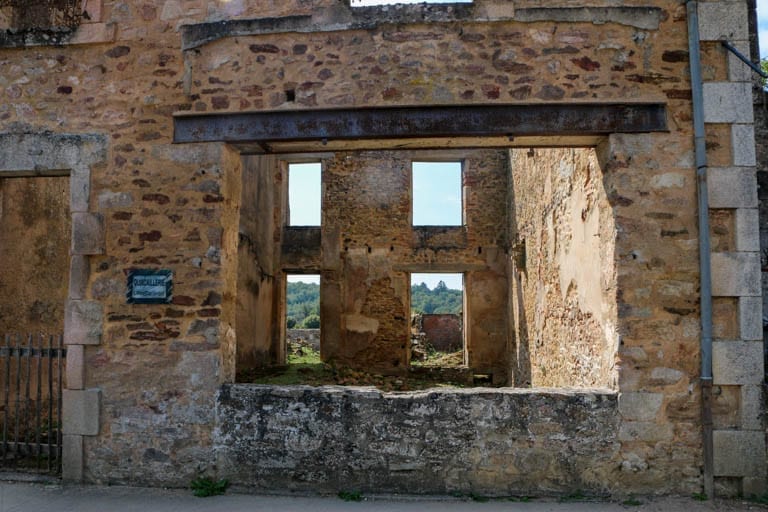
What happened at Oradour-sur-Glane after the massacre
In all 642 people lost their lives in Oradour-sur-Glane that day.
Though World War II has more than its fair share of atrocities, the maddening, eye-watering part about Oradour-sur-Glane is that there seemed to be no reason for the massacre.
A German soldier had been taken hostage by resistance fighters the previous day, but the SS made none of the usual announcements following retribution killing to warn the local population of the consequences of killing a German.
In contrast to the usual warnings and announcements following a reprisal, the soldiers of the 2nd Panzer SS-Division were ordered not to talk about the massacre at Oradour-sur-Glane.
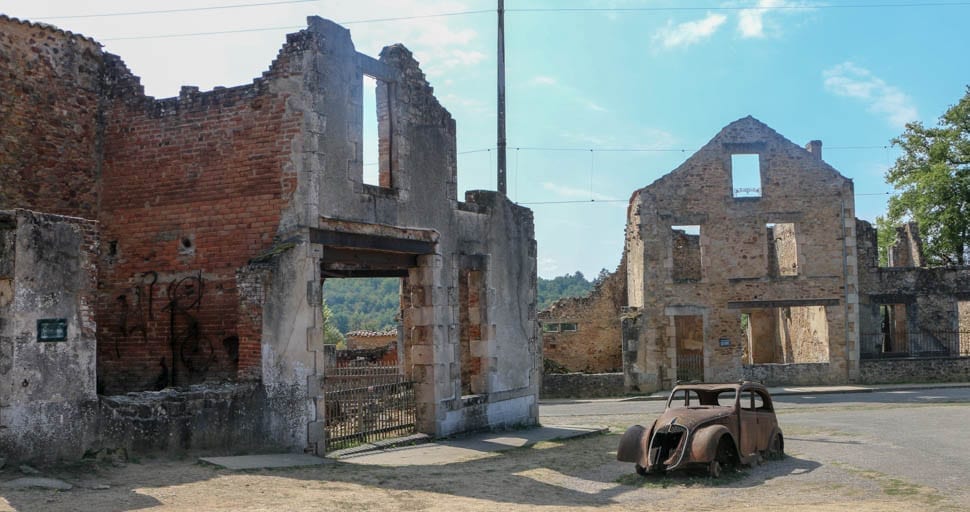
There was no mention by the Nazis about Jews hiding in the town, making it likely that the SS did not know of the four hiding refugees.
There is no official explanation for the massacre at Oradour-sur-Glane.
Why you should visit the martyr village of France
In the end, having a reason for the massacre will not change the outcome for the people who once lived in this quiet farming village in west-central France.
What struck me the most, as I wandered through this wrecked village frozen in time, trying to understand what happened at Oradour-sur-Glane, was the tragic irony of a memorial inside the church that all of the villagers would have known well.
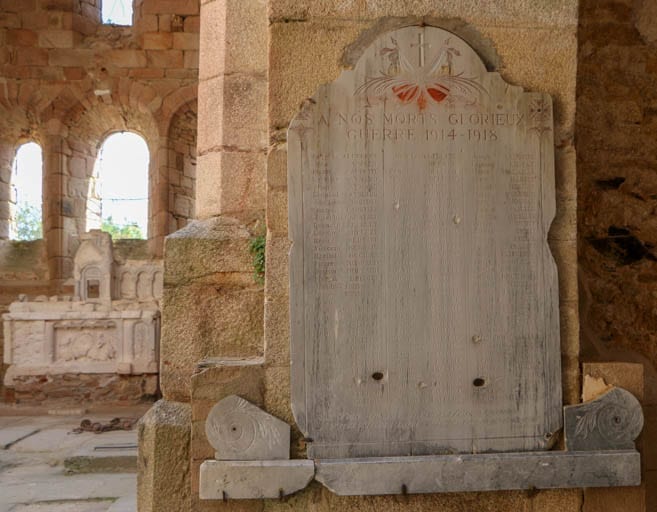
It was a memorial to the villagers who died in the First World War. Riddled with bullet holes and shrapnel scars from the June 10th massacre of the Second World War, it seemed a clear reminder that history will repeat itself if we let it.
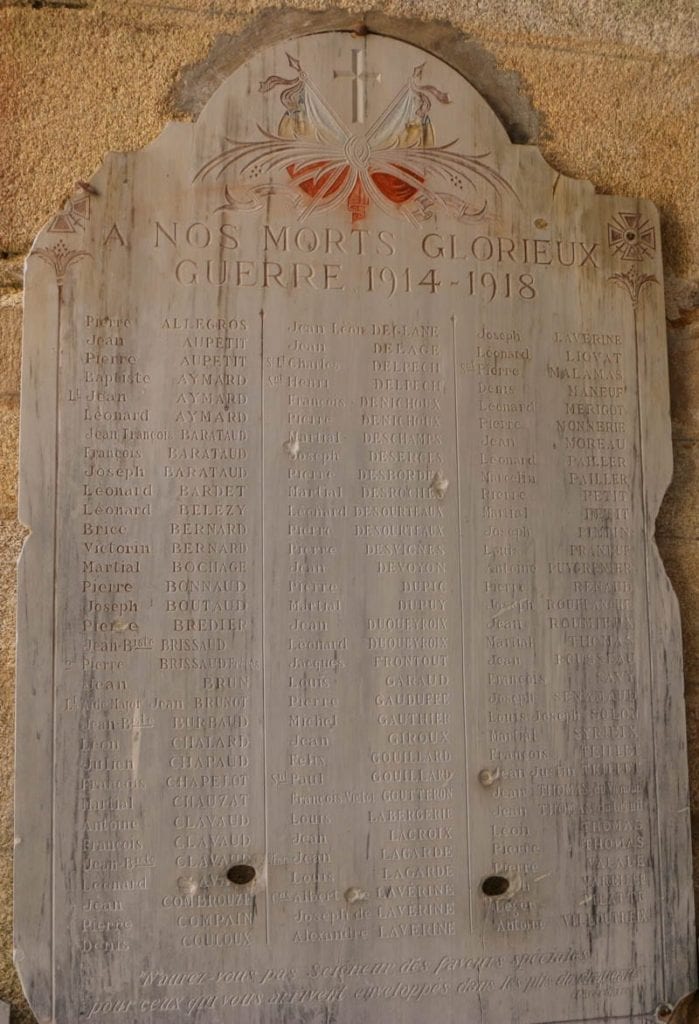
While it was an intense and difficult day, I am glad that I visited this village that serves as a memorial to the atrocities of war and to the evil of the Nazi Regime.
It is our duty to remember. It is our responsibility to never forget.
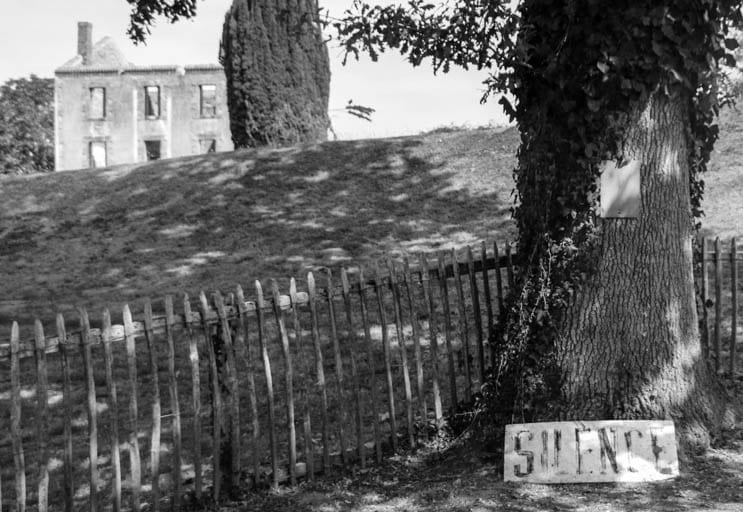
Logistics for Learning what Happened at Oradour-sur-Glane: the Martyr Village of France
Where is Oradour-sur-Glane?
The village is near Limoges in the sparsely populated Haute Vienne department of France. It is a 4.5-hour drive southwest of Paris, a 2.5-hour drive northeast of Bordeaux, and a 4.5-hour drive due south of Normandy.
What is the best way to get to Oradour-sur-Glane?
By car. You can take the train to Limoges and rent a car there. Europcar is available at the Limoges Railway Station. There is also an airport in Limoges.
When I visited the Oradour-sur-Glane museum and village memorial, I was coming from France’s Loire Valley. I hired a car at the train station at Saint Pierre des Corps and drove 2.5 hours south, doing it in a long but impactful day trip.
Where to stay near Oradour-sur-Glane
Check out these options near Oradour-sur-Glane:
If that doesn’t work, TripAdvisor has some ideas here:
How much does it cost to visit Oradour-sur-Glane?
Visiting Oradour-sur-Glaneis free of charge. There is a charge to enter the Centre de la Mémoire. Information is outdated online, but I recall paying 8 euros.
Budget 10 euro since prices may have gone up and sometimes there is a cost for parking (depending on the season). I found the audio guide unnecessary as all information is printed on the information panels throughout the museum.
What should you expect when visiting and trying to understand what happened at Oradour-sur-Glane?
The village and museum open at 09:00 and close between 17:00 and 19:00 depending on the season.
When you enter the martyr village of France, you will see a sign requesting silence. Not that you will need a reminder. The village is tragically beautifully with its remnants of daily life frozen in time by senseless flames and gunfire.
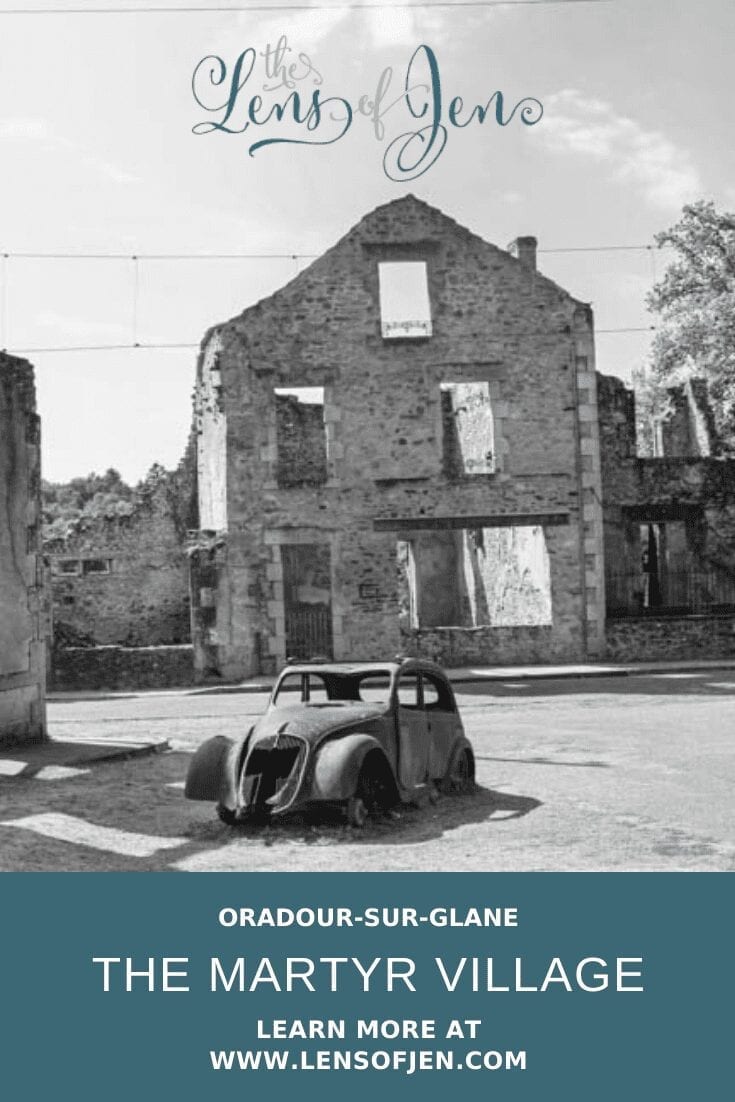
Wandering through the village, you will see a former café that likely bustled with activity on June 10, 1944. You will see the remnants of daily life: a sewing machine, a car parked in front of a house, and the village church.
Inside the church, you will see where the women and children were trapped and burned alive.
The museum takes you through what happened at Oradour-sur-Glane during the entire day of June 10, 1944, and the events leading up to the massacre. Here you will learn about the villagers who died and the very few who survived. You will also learn about the Nazi Panzer Division that committed this WWII atrocity.
What NOT to expect when trying to understand what happened at Oradour-sur-Glane
Do not expect answers. There are none.

Thank you for reading this post about what happened at Oradour-sur-Glane, the martyr village of France. It is our duty to remember. It is our responsibility to never forget.
More reading on WWII and France
Please find my curated list of best WWII non-fiction books here. This list is on Bookshop, an online bookstore that supports independent booksellers.
If you’re looking for more undiscovered towns in France, my friends at Travelersitch.com have a list of five beautiful towns in France you’ve never heard of!
About the Author
Hi! I’m Jen!
I’m a freelance writer and travel blogger who quit my nine-to-five after my fiancé, Jeff, died of cancer at the age of 40. When he died, I realized that life is just too short to delay our dreams. Since my dream was to travel and write, I now travel and write full-time. Today I wear hiking boots instead of heels and collect experiences instead of things.

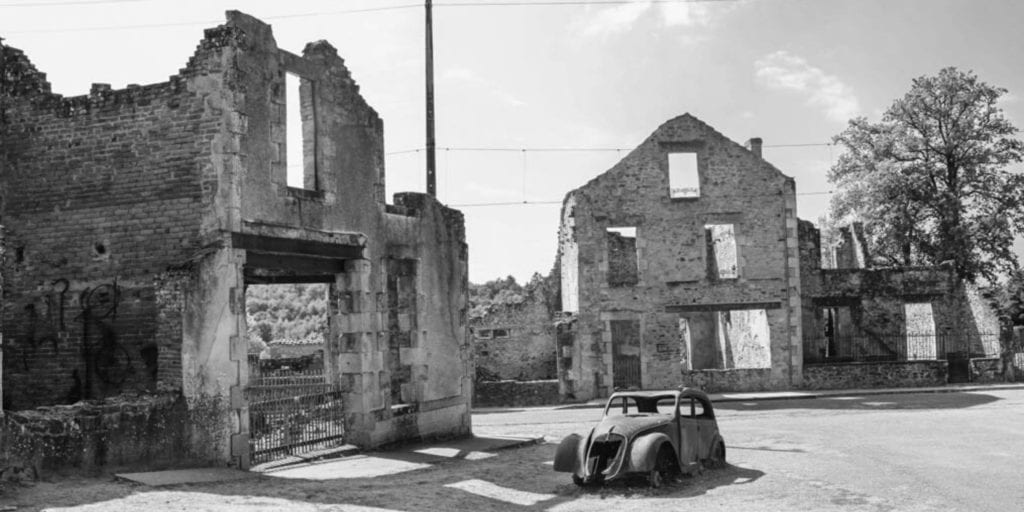



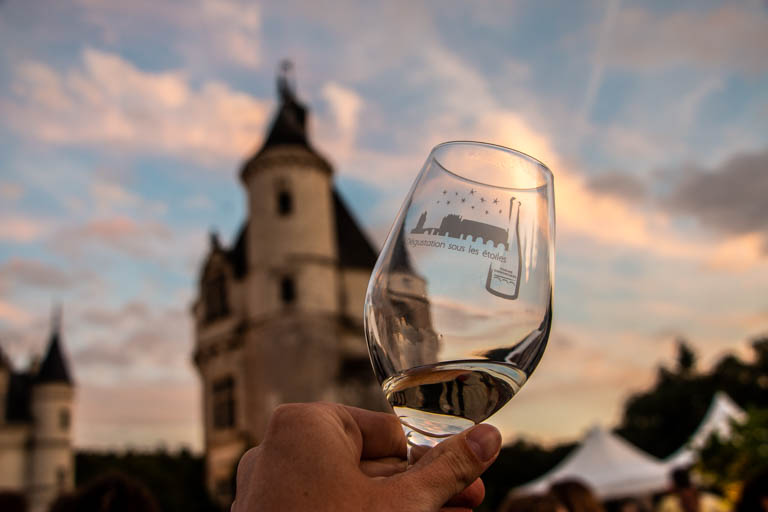

I’ve never heard this story but it’s such a tragedy. War truly is horrific, and World War II surpassed all others. Those people do deserve to be remembered, as it’s only through remembering that we can ever hope to not make the same mistakes. Poignant blog Jen.
Wow, these ruins are fascinating. Not sure I have ever heard of a martyr village but I will do my best to visit this town next time I am near.
Fascinating! I know that my big boys would really appreciate being able to see the ruins in person, as they are really interested in WWII. Hopefully we will be able to visit one day.
So heartbreaking! I did not know about this place, so many tragic events during world war II.
What a heartbreaking and horrific tragedy. I will want to visit Orador Sur Glane to pay tribute to the victims. We must never forget the atrocities of WWII. My husband’s grandfather was a concentration camp survivor and his mother and grandmother survived also after being forced from their home and into hiding. They were active in the Luxembourg Resistance and I’m currently documenting their story.
I always love your writing, but it’s especially poignant in this post. I remember visiting Auschwitz and felt similarly moved as you described. I hate how we seem to be slowly spinning backwards even with such devastating examples in history.
Wow…truly an informative post. So horrifying and tragic. I’ve never heard of this place – thanks for sharing! I definitely want to visit someday.
I have compassion for the people who went through such horror. Have not heard about this place before the blog post. Would like to visit to gain more knowledge and pay respects.
Heartbreaking. I remember my grandmother talking about the war. She was a little girl and her stories were so sad. It was probably even more so for the adults who could comprehend what was happening.
I can’t imagine what it must have been like to face such evil and to be helpless to do anything about it. Thanks for reading, Kasia.
Tragic. I’m a WW2 history buff, mostly planes though, and these tragedies rarely are explained like this. You’re right, we all need to know about this so these acts don’t happen again.
Sometimes these tragedies are so hard to write about, you know? I still haven’t written about the Killing Fields in Phnom Penh more than a year later. It’s so raw and horrible. But I’m glad I went. Thank you for reading – even though I know it was a tough read.
What fantastic written piece love the history behind it all although not pleasant with 642 people losing there lives.
Thanks for introducing me to this its something I knew nothing about
Thanks so much for reading, Richard. I know it isn’t an easy one to absorb. But it’s so important that we never forget.
Thank you for bringing the war time atrocities of Oradour-sur-Glane to my attention. I must admit to having no idea what happened there. It brought tears to my eyes and a deep feeling of sadness for the victims.
Thank you for reading, Wendy. Evn though it is a tear-jerker.
This is horrifying. We’d a sinking feeling as we read the post.
It is, indeed, horrifying. Thank you for reading even though it is a really hard thing to digest.
Thank you for sharing this piece of history that I was unaware of. What a tragic and sad story yet as you mention so important not to forget. It seems crazy as to why they would be targeted as they didn’t seem to pose any threat. I can’t imagine what that must have been like for the few who survived.
It is unfathomable. It seems the soldiers were simply frustrated by one of their own being kidnapped by the resistance, so they took it out on this town. But even that is just a guess because, as good as the Nazis were about record keeping, they destroyed anything related to Oradour-sur-Glane (if they ever even put anything down on paper at all).
Crazy to think that I’ve never learned about this. As a german I think I should visit this place as soon as possible…
Thank you for reading, Carina! Many people haven’t heard about this place, which is why I’m so keen to share it with the world. I appreciate your help!
Jen, We visited Orador Sur Glane in 2006; it truly is an exceptionally moving place. Your profound well-written words capture my feelings about this place exactly. Thank you.